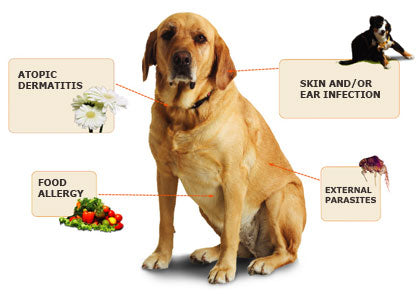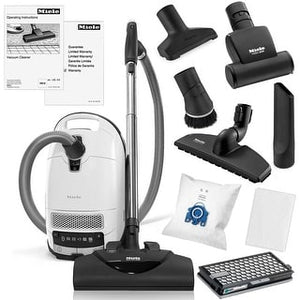Know Your Pet And Their Allergies

Most families who have pets are totally ignorant of the fact that pets have allergies too. The symptoms may be very obvious but we tend to put it down to weather, heat, ticks etc.
If your dog keeps on licking and chewing his paws, you put it down to bug bites or maybe something he could have stepped on. You only tend to realize this when he doesn’t stop his licking and chewing and take him to the veterinary doctor and he tells you that your dog is allergic to pollen.
Well don’t feel guilty. You are not the only one. Lots of people cannot tell if their pets are allergic to stuff. Here we look at some of the symptoms that may help you realize that your pet may be suffering from an allergic reaction.

Symptoms
Your pet may exhibit the following symptoms depending on the allergy that he suffers from.
- Watery eyes
- Sneezing
- Coughing
- Scratching
- Loss of hair
- Ear Infections
- Vomiting
- Chewing and licking the paw
- Diarrhea

Common Allergens
Below, I list a few common allergens that can cause pet allergies.
- Tree, grass and weed pollens
- Mold spores
- Dust and house dust mites
- Dander
- Feathers
- Cigarette smoke
- Food ingredients like beef, chicken, pork, corn, wheat or soy
- Prescription drugs
- Fleas and flea-control products
- Perfumes
- Cleaning products
- Fabrics
- Insecticidal shampoo
- Rubber and plastic material
Types Of Allergies

Atopy
This is a seasonal allergy, most common in cats and dogs. Pets who are allergic pollen suffer from atopy. The symptoms include:
- Constant licking of the back and groin area
- Recurrent ear infection/inflamed ears
- Chewing and licking of the paws
- Cats also suffer from asthma like wheezing and respiratory problems
- Face rubbing
- Recurrent hot spots in dogs
- Facial scabbing in cats
- Contact Dermatitis
This is a disease suffered by pets who are allergic to carpets, plastic or cleaners. The symptoms include:
- Red itchy bumps or blisters on areas that are sparsely covered by skin and are exposed to the allergen such as the belly, feet, or nose
- Intense and non-stop scratching
- Loss of hair, in severe conditions
- Food Allergies
10% of pet allergies are derived from food. Food allergies may show up alongside allergies to pollen, dust, etc. The Symptoms include:
- Itching, especially around the face, feet, trunk, limbs and anal area Ear problems, often yeast-related
- Skin infections that respond to antibiotics, but recur again as soon as the antibiotic therapy ceases occasionally, dogs with true food allergies may have increased bowel movements and soft stool.
Other less common, but more severe allergic reactions include:
- Urticaria (hives)
- Angioedema (facial swelling)
- Anaphylaxis is a rare, life-threatening, immediate allergic reaction to something ingested or injected. If untreated, it can in some cases, result in shock, respiratory and cardiac failure, and death.
These symptoms usually appear within 20 minutes of being exposed to the allergen, which can include drugs, chemicals, insect bites, or something eaten.

Prevent The Symptoms
I am sure we all love our pets and want to ensure that they do not suffer. As they say prevention is better than cure. On that note, let’s look at a few things that we can do to ensure that our pets remain free from allergies and the subsequent suffering.
- Keep a dedicated area in the house for your pet to use. Try and make sure your pet tends to stay here all the time.
- Make sure that the area allocated to your pet is easy to clean and has little or no carpeting and furniture.
- Much as you would like to, do not allow pets into the bedrooms. It’s an absolute No no. The particles that carry animal allergens are so small that they can seep right into your comforters, sheets, and pillow covers.
- Wash all your bedding twice a week
- Clean drapes and furniture regularly. Keep stuffed animal collections in glass cases. Household items like carpeting and stuffed animals are a hide out for all sorts of pet allergens.
- Use a specialized filter to clear pet allergens from the air
- Try removing the allergens temporarily by wiping your pet down with a warm, damp washcloth at least twice a week. If you have a your cat get it to cooperate, immersing him from the neck down in warm water for 3 minutes each week is the most effective way to remove allergens.
- Admin .







Comments 0